
|
|
|
|
|
|
|
|
|
 |
||||||||||||||||||
|
||||||||||||||||||
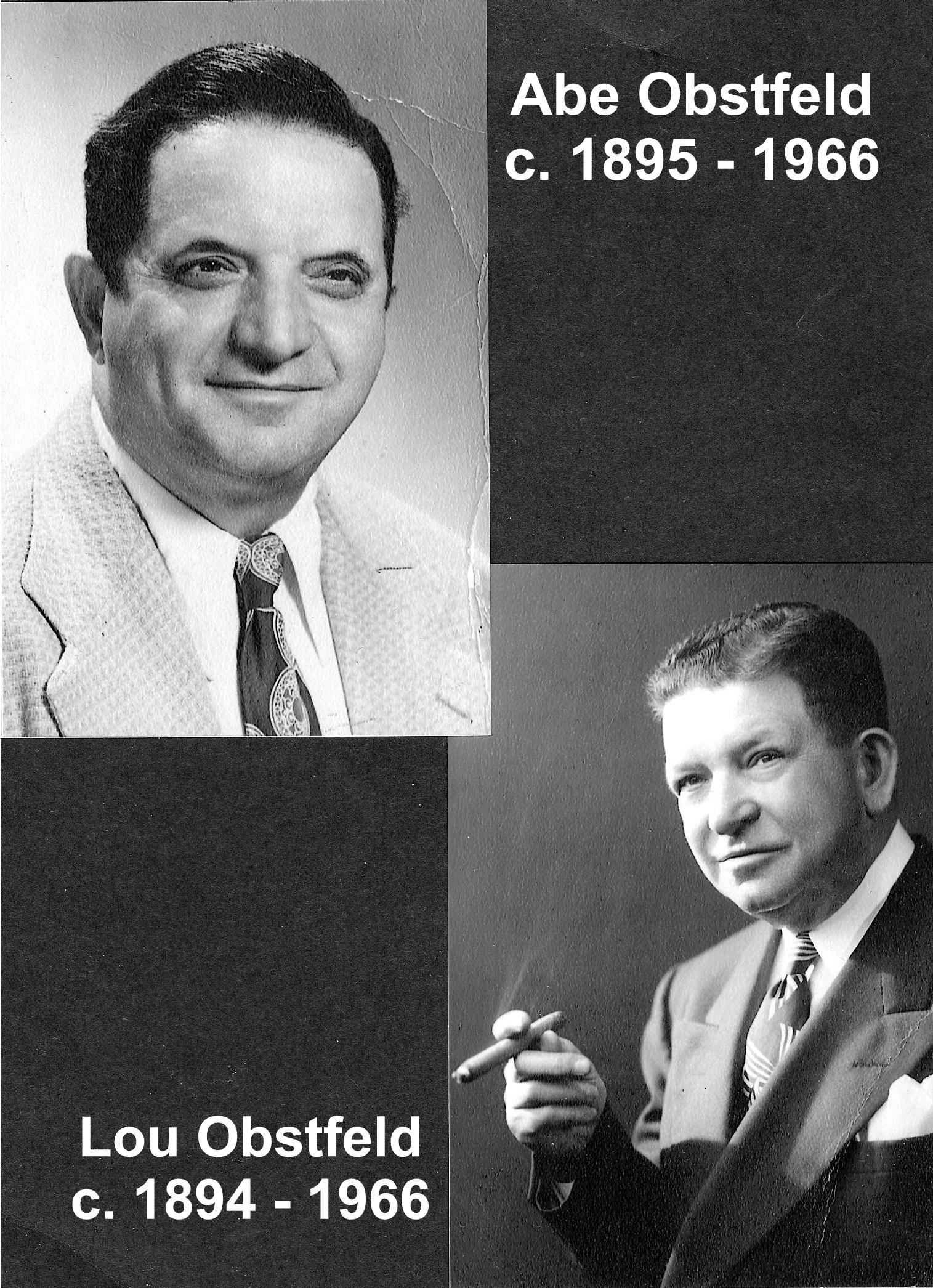
Markwell was started in 1919 by two brothers, Lou and Abe Obstfeld, on their release from Service after World War I, having both resolved not to be employed by others again. Lou, the elder of the two, became president and Abe was vice-president and general manager.
The background of both was in marking devices. Lou had worked for the Botts Manufacturing Company, who were manufacturers of specialty inks such as those for mimeographing equipment, for marking and stenciling equipment, and also handled some items made specially for Botts, such as pots, gluing equipment, etc. Abe had worked for Binney and Smith, a company that manufactured crayons, and that later became known worldwide for their Crayola brandname.
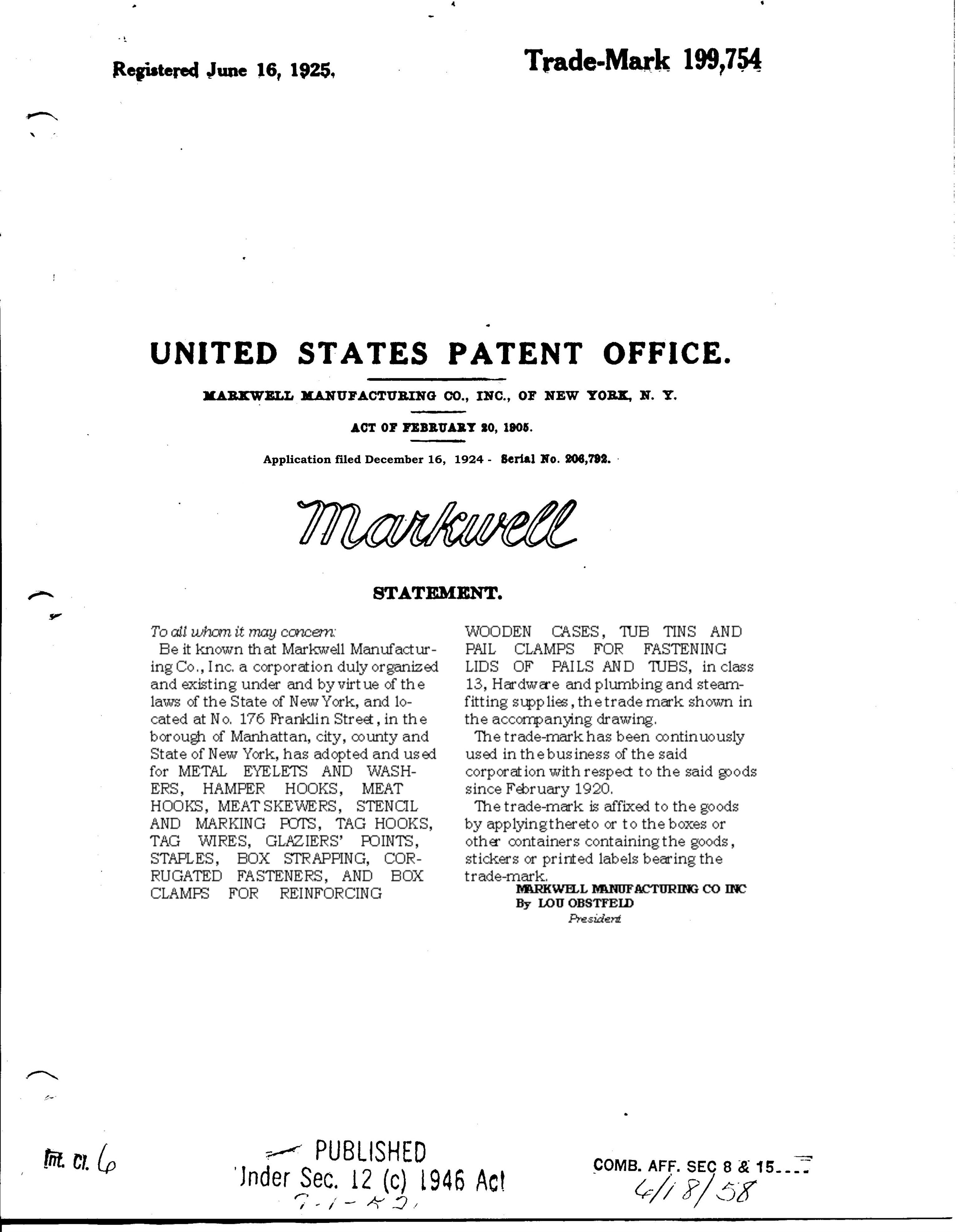
First Trade
Mark Application
Filed
Registered
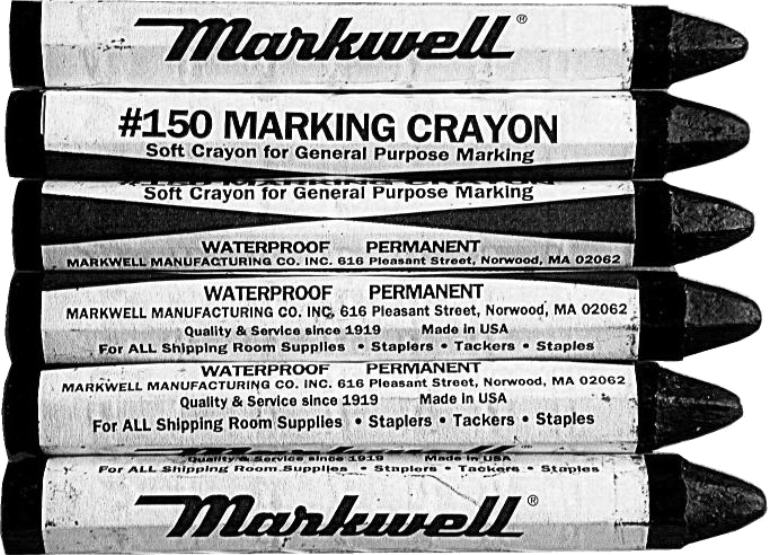
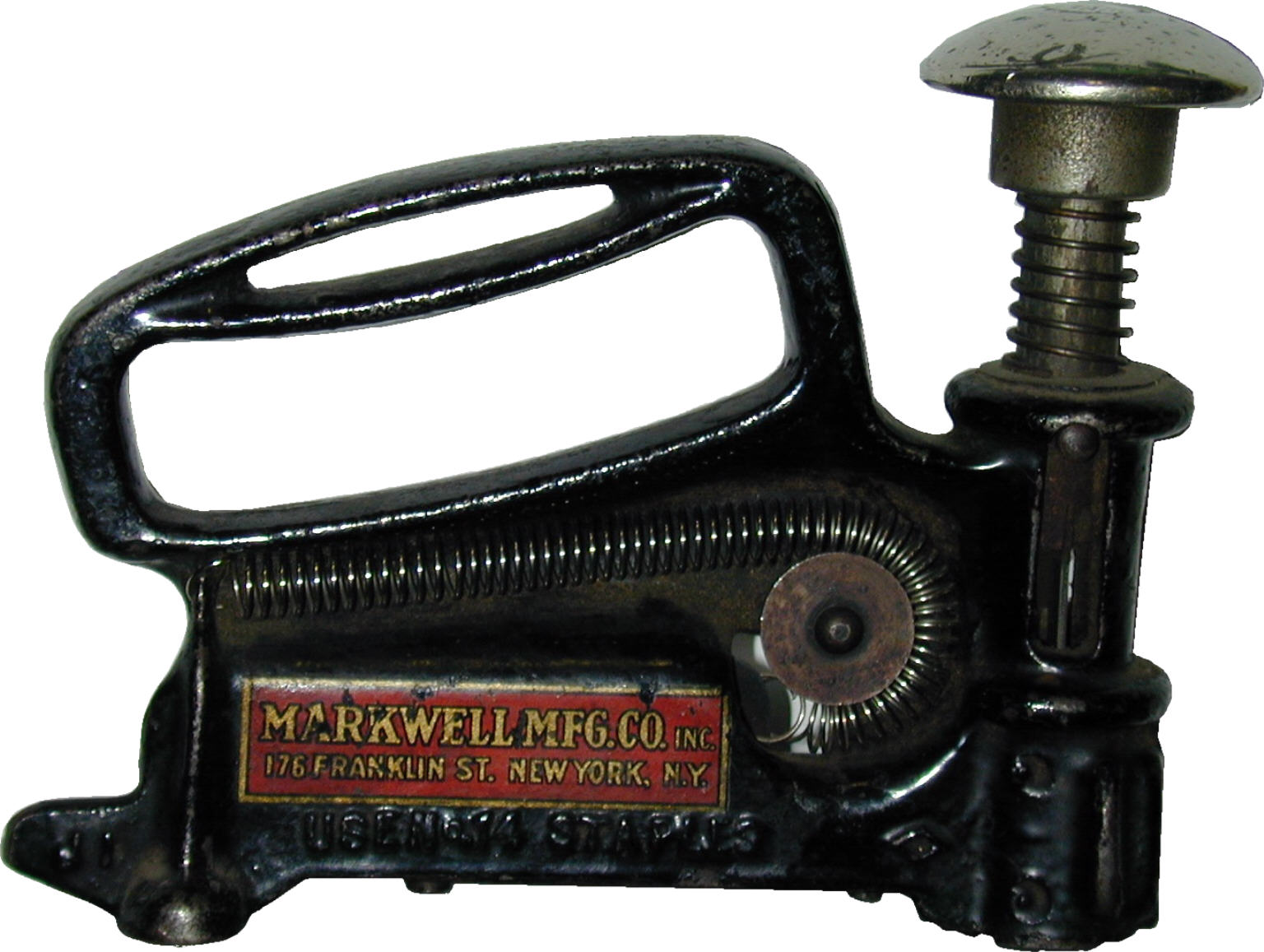
Introduced in 1920
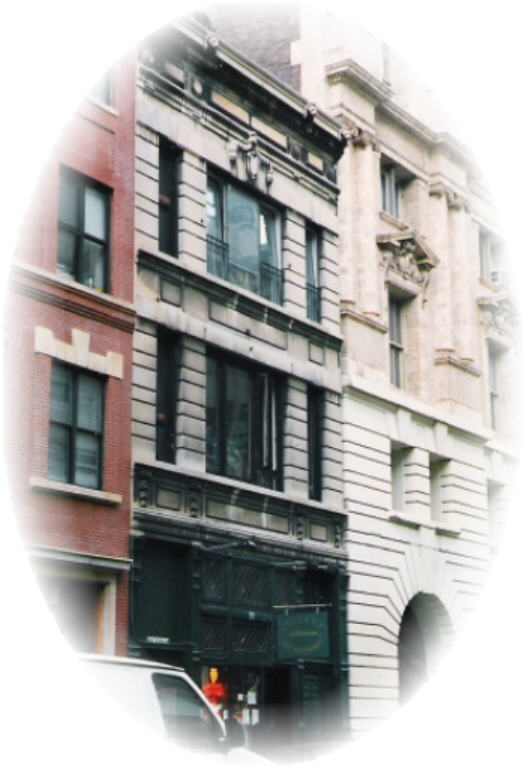 The brothers decided to form
a company based on the products of which they both had knowledge in the marking
field – hence the name Mark-Well. They
had products made exclusively for them and
their first product, the Markwell #150 industrial
crayon, was reluctantly discontinued in 2005. They
discovered a company, Acme, owned by a man named M. S. Cook, that made stapling
machines, and had a stapling machine made for themselves. The Markwell 176
two-hand strike tacker, operated by holding in one
hand and hitting the driving rod with the other, was so named because at the
time the company was located at
The brothers decided to form
a company based on the products of which they both had knowledge in the marking
field – hence the name Mark-Well. They
had products made exclusively for them and
their first product, the Markwell #150 industrial
crayon, was reluctantly discontinued in 2005. They
discovered a company, Acme, owned by a man named M. S. Cook, that made stapling
machines, and had a stapling machine made for themselves. The Markwell 176
two-hand strike tacker, operated by holding in one
hand and hitting the driving rod with the other, was so named because at the
time the company was located at
Shortly
thereafter, a visiting South African by the name of
Markwell’s first employee was a man named William Drypolcher,
who went to school at night to become and engineer. He was probably responsible for the evolution
of the RB type two-hand industrial strike tackers,
using staples larger than the 176. It
was he who developed the idea of a single-handed spring operated squeeze tacker, that
could be squeezed with one hand, while holding the product being stapled with
the other. But because the cost involved
in making this machine, such as tools and dies, was beyond Markwell’s
ability to cope, they approached the Boston Wire Stitcher
Company, located in
The
Boston Wire Stitcher Co was primarily in the stitcher, bookbinding and matchbook business, and the
likes, and was owned at the time by a gentleman named Leonard Lawrence, and he
had as his assistant and chief executive officer, a man by name of Joseph D. A.
Whalen, who took a liking to the two young brothers, and decided to make the
machines for Markwell as well as for themselves. They made the Bostitch
machine in black, and the Markwell machine in blue,
and the staples were different so that they were not interchangeable. It was as result of Markwell
introducing their patented tacker to them, that Bostitch entered the staple industry.
During that time Lou and Abe further divided their responsibilities, with Lou becoming involved in purchasing, and having staple making equipment made for them so that they could start making their own staples. Abe, on the other hand, handled the sales side of the business, trying to locate able salesmen and turning them into distributors. Lou and Abe did not get on well with each other, so the divisions were very separate, and employees working in one section tended to keep apart from the others. Abe was an avid Giants fan, Lou favored the Dodgers.
In spite of these tensions, the
brothers ran a very successful company.
During
the 1930’s, Markwell’s early employees included the
following:
Lee Grafton Greenfield, switchboard Esther Karp, A.O’s secretary
Claire Greenfield Spiegel, office clerk Betty Friedman Frank, L.O’s sec.
Bernie Goldsmith, Sales Irving
Kaplan, Sales
Henry Koval,
Sales Norman
Spiegel, Sales
Ann Baron, bookkeeping Kate Slotsky Shimansky, sec.
Laura ? Jack
Conway
Sol Obstfeld
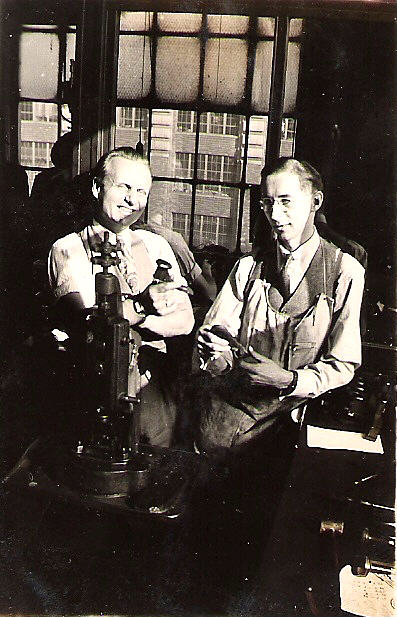
Sam Fowler, Henry Heitmeyer, 1941
At
the height of its growth under Lou and Abe, Markwell
employed a total of approximately 33 people in 1954. Markwell also
operated its exports under the name Markwell Export,
and manufactured its staples under the name Wyrestapes,
Inc.
In
the history of the staple making industry, one of the earliest manufacturers
was a company called Hotchkiss (now no longer in business), situated in
DuPont
promoted the advent of glued staple strips, as used today, by developing a cement that would hold wire staples together, allowing a
strip to be handled, fed into a stapling machine, and pushed forward to the
stapling position by a spring.
Markwell, together with Hotchkiss, Bostitch and Acme,
were the leading staple making companies of their time.
Markwell got involved in desk-top stapling through meeting a gentleman named
Otto Attula, who took on production of some of the Markwell desk machines, such as the old F machine, which
was a forerunner of the RF machine family.
Many of the machines being developed at the time by another Markwell engineer, Fred Schmidt. The F machine used a staple that was straight
(square) across the top, and Markwell developed and
patented a racked, or diagonally
displaced staple so that no others could be
used in their machines. This led to the
further development of the RX and SX machines, using the same type of patent,
but with smaller staples.
Growth
was slow and tough at the time, because of the Great Depression, and sales were
not often come by. Abe persisted, and
gave rise to some of the leading distributors of the times. In November 1925, he hired Harry Fishstrom on the
Shortly thereafter, Abe met Herbert Crispo,
who also wanted to be in the staple industry, and he formed Crispo
Staple in November 1925, representing Markwell in
Other early Markwell
distributors were Bill Cannon, Lake Stamp Company,
Ken
Hill, started Hill Stapler in
The
earliest recorded European distributor for Markwell
products was Heinz Buhnen, which association arose
from Lou’s first European trip in 1930.
Lou traveled at least one more time to
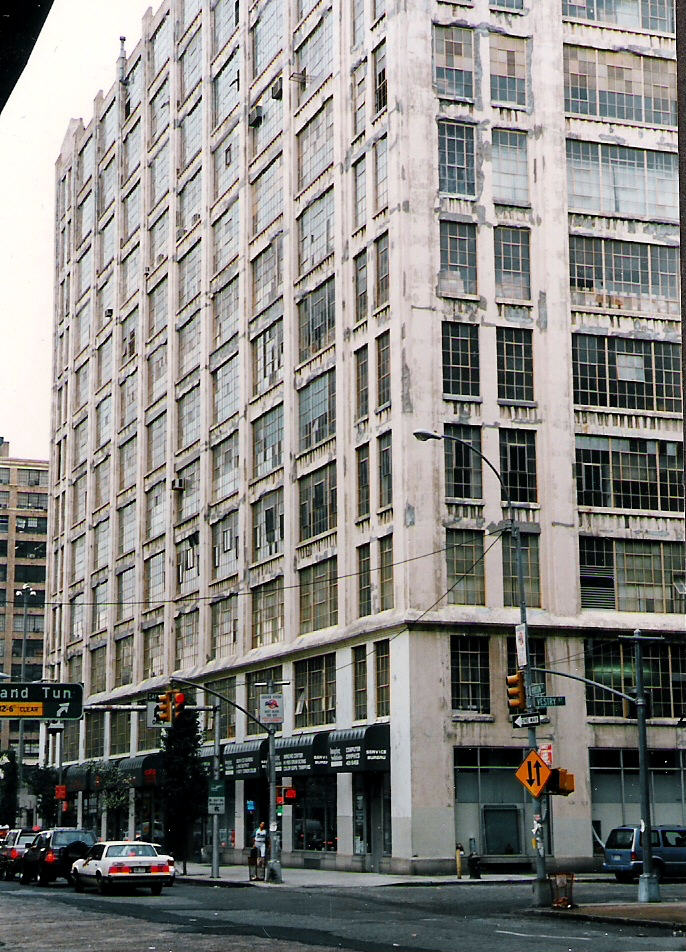
Lou
and Abe had a younger third brother, Sol, who started his own Markwell distribution business, Tiglon,
from “tiger” and “lion”, in 1945, when he was discharged from service after
WWII. Tiglon
operated from the offices of Markwell at
Eison, of Rolsen Press, was involved in all their printing. In 1954, Abe’s son-in-law, Mort Newburg, joined the company.
Around this time, the South African,
grew the company into a major packaging company, Afcom, (now Afcom/G.E.Hudson) that
not only still distributed Markwell products, but also manufactured its own proprietary products.
Markwell again moved in 1955 to 424 West 33rd Street, and it was at this time that they acquired heavy equipment, a 35 ton and a 10 ton Bliss press to manufacture their own Desk Mate office stapler, designed by Fred Schmidt. This gave rise to the companion Pro-Plyer stapling plier. Production of both tools was discontinued in 1990.
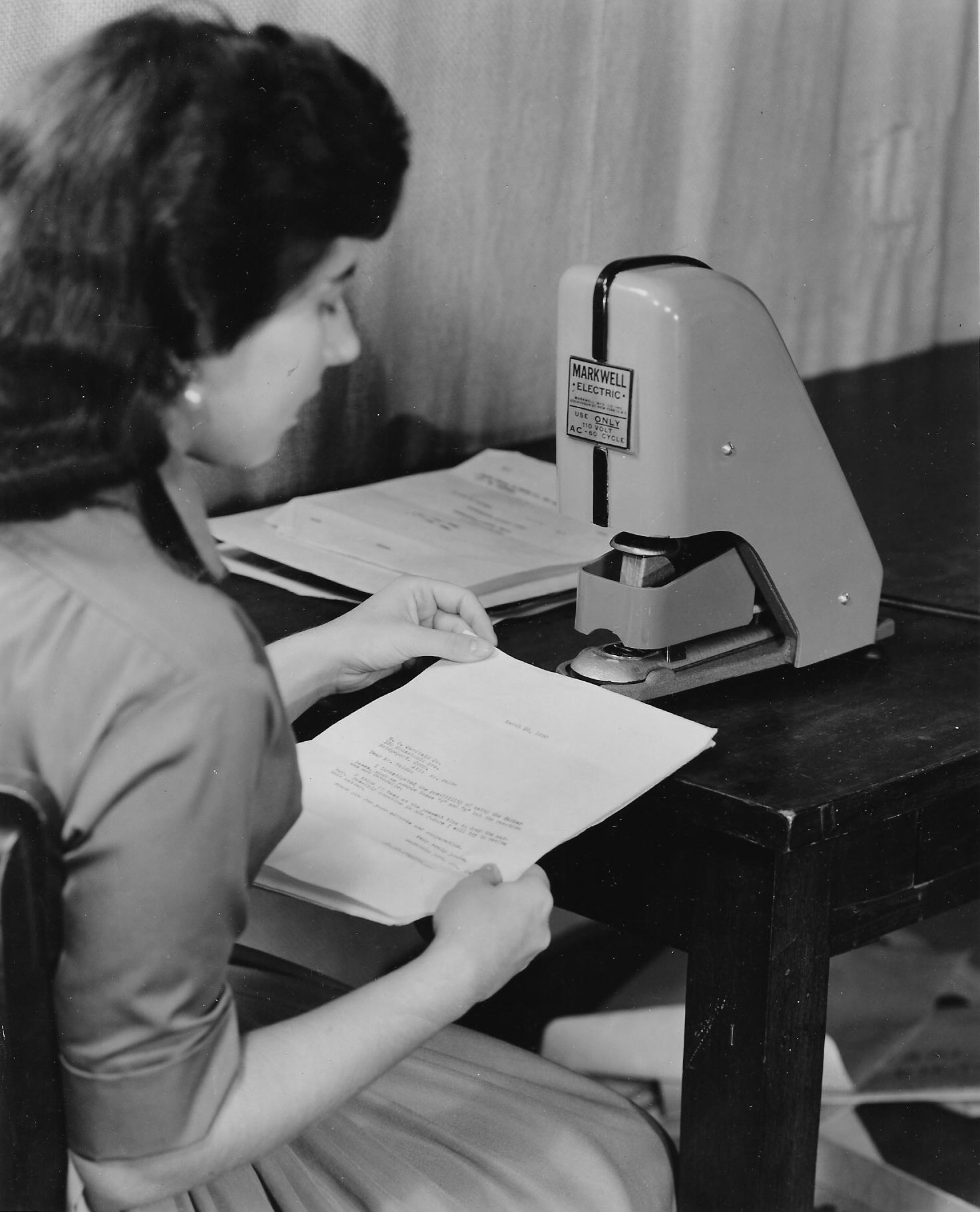
An early Markwell development:
Electric desk stapler, 1951
Incorporating the RF Staplemaster
front-loading desk stapler
Also in 1955, Abe bought out Lou’s part ownership and continued as sole owner until his retirement in 1960, when sole management and a vice-presidency was conferred on Mort Newburg. He assumed the presidency of Markwell in 1961. Abe and Lou both passed away in 1966, Abe succumbing to a heart attack. Mort ran the company until failing health forced his retirement and the sale of the company to Afcom (African Commerce), their South African associate.
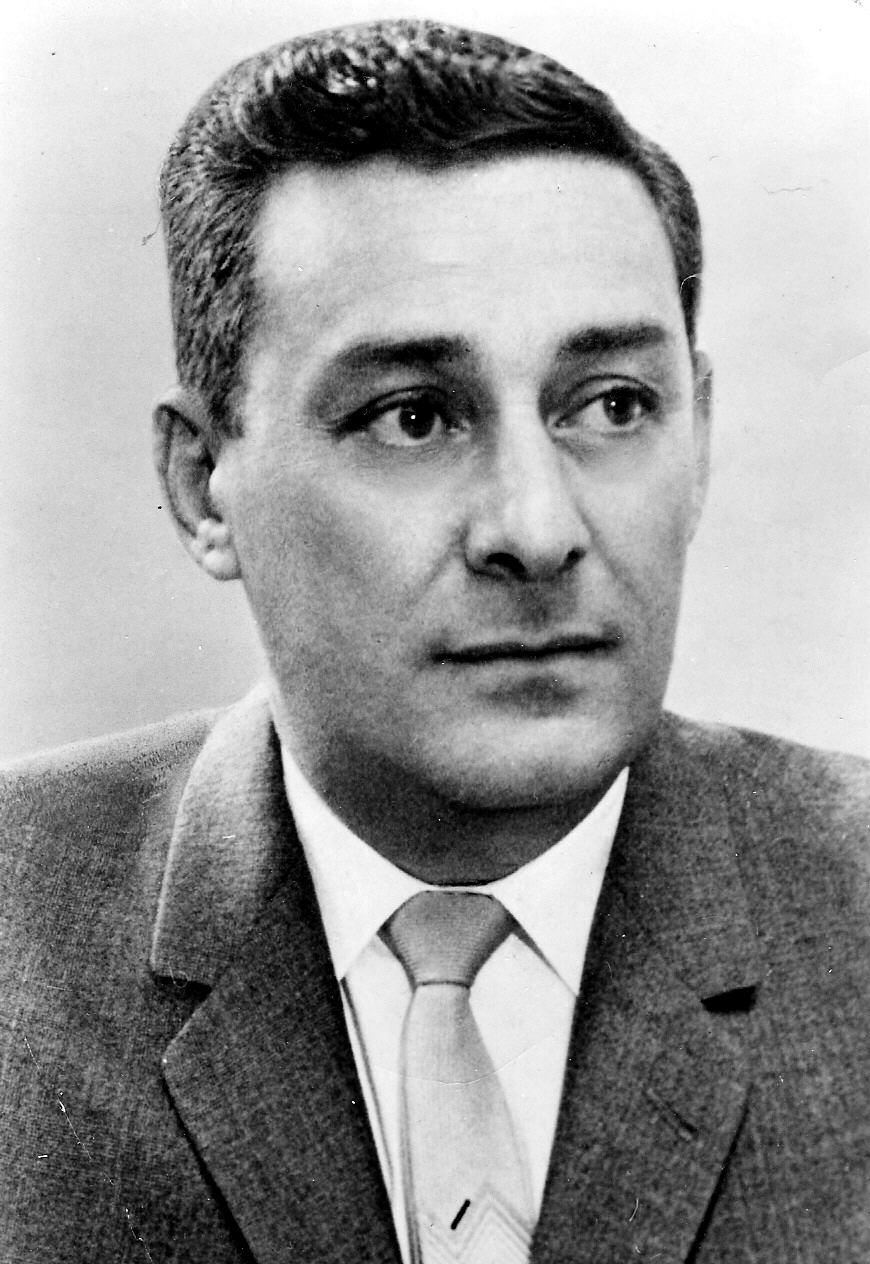
Under Mort Newburg’s
stewardship, Markwell relinquished its strict
injunction on its faithful distributors to sell only Markwell
products, thus permitting their survival and growth. He also formed Markwell
South
Mort Newburg, 1961
In
1985, Markwell again moved, for the first time in its
existence out of
It
was prudent to relocate Markwell to the
Assurance
was secured, as a Gentleman’s Agreement, that Bostitch would continue to manufacture both stapling tools
and staples for Markwell, which they had been doing
since the 1930’s. It soon became
evident that the small Markwell product range
(essentially industrial manual tackers and pliers,
all made for Markwell by Bostitch)
was not able to sustain the company.
Also, the many original dedicated Markwell
distributor principals were all reaching retirement age and were due to dispose
of, or close, their businesses, thus reducing Markwell’s
marketability.
A
strategy to expand into the industrial/pneumatic market, to secure partnered
distribution and to contemplate own staple manufacture was launched. In order to achieve these objectives, Sam acquired
a partner, Cyril (Saul) Rozowsky. Together they embarked on setting up pneumatic tool and fastener
sales in the north-east, out of Norwood, and purchased a number of used staple
making machines to start own manufacture again.
They also entered into negotiations with Tony Megna,
of Anthony Company,
1994
was a busy year for Markwell, as not only did most of
the above take place then, but another major significant event occurred – the Bostitch Company, purchased by the Stanley Works some years
earlier, advised Markwell that they would no longer
manufacture any product for them.
Markwell had already been developing replacement parts for its tools with a
manufacturing company in
In early 1996 a sales agent was hired in the
Buffalo area to restore Markwell’s presence there,
and as the local business grew, Markwell Fastening,
Inc., was formed in 1996, with Mark Ciofani, also
previously with DuoFast, as principal.
In
1999, Markwell opened its own office in
Markwell Florida, Inc, was purchased entirely by a partnership of Marcos
Gutierrez Jr., Maria Barrios and Jorge Chipi, in
January 2003, and became a totally independent company. The inventory and customer lists of Markwell Fastening, Inc, was sold
to Numax, Inc., in March 2004, and the location in

In October of 2009, after a brief illness, Mr Saul Rozowsky passed away.
Jeff Cobb and Eileen Beatrice, Markwell's long-time bookkeeper/manager,
were welcomed as new partners.
Saul (Cyril) Rozowsky
1930 - 2009
In January, 2011, Markwell relocated to larger premises down the street, to afford the increasing shipping traffic easier access, and is now located at 692 Pleasant Street, Norwood, MA.
Markwell
Manufacturing Co Inc. continues to promote specialty stapling and fastening
tools and staples under its own brand name, as well as other leading
vendor products. Its growing market
continues to include
the
©
Sam
Opland, President
June, 2011